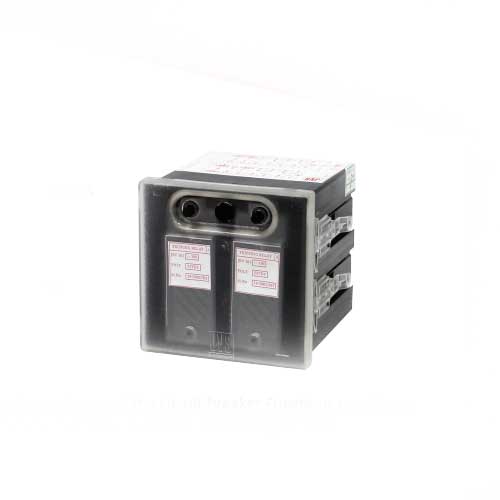Schedule a Call Back
Important Safety Tips on Using Portable Ladders
 Technical Articles
Technical Articles- Oct 15,15
Falls from portable ladders are a major source of injury in the workplace. They are usually more serious than other physical injuries in the workplace, and more costly for everyone in terms of time loss, compensation costs and human suffering.
Ladders have been around a long time, and are common to almost every home and workplace. This, and their simplicity, generates the false impression that ladder work requires no special knowledge or skills. The opposite is true. Anyone who uses a ladder should have hands-on safety training to learn about the various risks involved and the precautions necessary to prevent falling.
Choosing the Right Ladder
Using a ladder for purposes not anticipated in its design is the most common cause of falls. Workers select among the ladders that are made available to them by the employer, but these are not necessarily what safety would dictate. The Canadian Standards Association (CSA) sets standards for ladder capacity. Safety regulations give specific measurement requirements.
Companies and individuals need to focus more on the importance of choosing a CSA-approved ladder of appropriate strength, type, and length for the task.
Ladder inspection and set-up, climbing techniques, safety precautions and common sense are also important factors that must be considered.
Inspecting a Ladder
Use a portable ladder only if you’re sure it can support you. Inspect the ladder before and after using it. Pay close attention to painted wooden ladders; the paint could be hiding defects. If the ladder is defective, tag it and have it either repaired or thrown out.
Setting Up a Ladder
Ladders are very dangerous pieces of equipment. Once you’ve inspected your ladder and established that it’s in good condition, it’s important to know where and how to set up the ladder, and where and how not to.
> Before setting up a ladder, check for overhead electrical wires. Clear the area around the base and top of the ladder of debris, tools and other objects.
> If you must use a ladder in passageways, driveways or other high traffic areas, set up suitable barricades. If you’re using a ladder in a doorway, lock the doors shut.
> Place the ladder feet 1/4 of the ladder’s working length away from the base of the structure (e.g., if the ladder measures 8 feet between its base and its support point at the top of a wall, there should be 2 feet between the base of the ladder and the foot of the wall).
> Rest both side rails on the top support and secure the ladder to prevent slipping.
> If you will be stepping onto a higher platform (e.g., a roof or scaffold) from the ladder, make sure the ladder extends at least 1 m (3 ft) above that platform.
> Place the ladder on a firm, level footing. Secure the bottom to prevent it from slipping. Have someone hold the ladder if possible, especially if the ladder doesn’t have slip-resistant feet or secure blocking.
> Do not set up a ladder on a box, cart, table or scaffold; on ice; or on any other unstable or slippery surface.
Stand a ladder on both side rails, not on any of its rungs.
Climbing a Ladder
Even when you’re not going very high, climbing a ladder can be a bit of a balancing act. By following these tips you can climb with greater comfort and security:
> Grasp the rungs of the ladder, not the side rails. The rungs are easier to hold onto in case your foot slips. Face the ladder when going up or down and when working from it. Keep the centre of your body within the side rails.
> Maintain three-point contact by keeping two hands and one foot, or two feet and one hand, on the ladder at all times.
> Do not carry objects in your hands while on a ladder. Instead, hoist materials or attach tools to your belt.
Staying on a Ladder
Above all, don’t fall! Adopt these common-sense rules:
> Tie yourself off with a safety harness when working 3 m (10 ft) or more off the ground or when working with both hands.
> Do not work from the top three rungs. The higher you go on a ladder, the greater the possibility that it will slip out at the base.
> Wear protective footwear with slip-resistant soles and heels. Before mounting a ladder, make sure your footwear is in good condition, and wipe off the soles if necessary. Don’t climb a ladder if the soles of your shoes or boots are wet, muddy or slippery.
> Ensure that only one person is on a single-width ladder. A double-width ladder should have no more than one person on each side.
> Don’t straddle the space between a ladder and another object.
> Don’t overreach from a ladder; step down and move the ladder as required. You might need to take a rest break after awhile, since frequent climbing is hard work on the legs.
> Keep your balance. If you’re doing work that requires you to look up and reach above your head (e.g., to wash windows or paint a wall) rest frequently to avoid arm fatigue and disorientation. If you become dizzy or panicky, drape your arms over a rung and rest your head against another rung or side rail. Climb down slowly.
Other Safety Precautions
Ensure that all electrical equipment used during ladder work is in good condition and properly grounded.
Do not join two short ladders to make a longer ladder. The side rails are not strong enough to support the extra load.
Do not allow anyone to stand under a ladder.
Do not use a ladder placed in a horizontal position as a scaffold plank or runway.
Do not use a chair, barrel, box or anything else as a makeshift ladder.
If you have access to a fixed stairway or scaffold, use it instead of a portable ladder.
Make sure you receive the proper training if your work involves the use of portable ladders. Don’t even use a ladder unless it is CSA-approved, and designed for the task you are performing. And remember that the little time and effort it takes to inspect your ladder, set it up properly and exercise caution will make your job easier, and could quite possibly save your life.
Source: Canadian Centre for Occupational Health and Safety/Government of Canada. Reprinted with permission from CCOHS.
Related Stories

Five ways to reduce your manufacturing facility's carbon footprint
In this article, Emily Newton delves into carbon-neutral techniques that can minimise environmental impact while still obtaining the benefits of more conventional operations.
Read more
Ingersoll Rand India appoints Sunil Khanduja as Managing Director
Prior to this, he served as the Business Head for one of the key verticals in Ingersoll Rand India and also managed Ingersoll Rand EMEIA (Europe, Middle East, India, and Africa) Operations as Direct..
Read more
JK Tyre becomes India’s first tyre company to join RE100
The company has set a primary objective to incrementally increase the utilisation of renewable energy by 2-5% annually and has consistently pursued the installation or procurement of green energy so..
Read moreRelated Products

High Speed Tripping Relay Two Element Relay - Jrv 181x2
JVS Electronics Pvt Ltd offers a wide range of high speed Read more

Plenty of Motion Possibilities in a Compact Housing
B&R Industrial Automation offers a wide range of plen Read more

High Speeed Tripping Relay Three Element Relay
JVS Electronics Pvt Ltd offers a wide range of high speed tripping relay three element relay - JRV 181x3.











